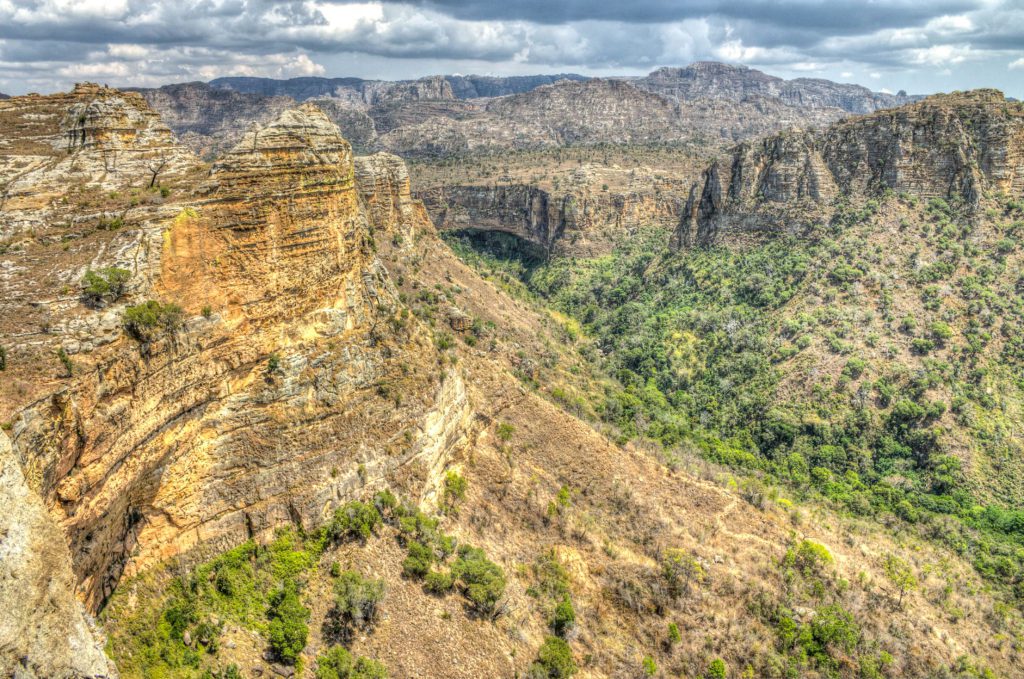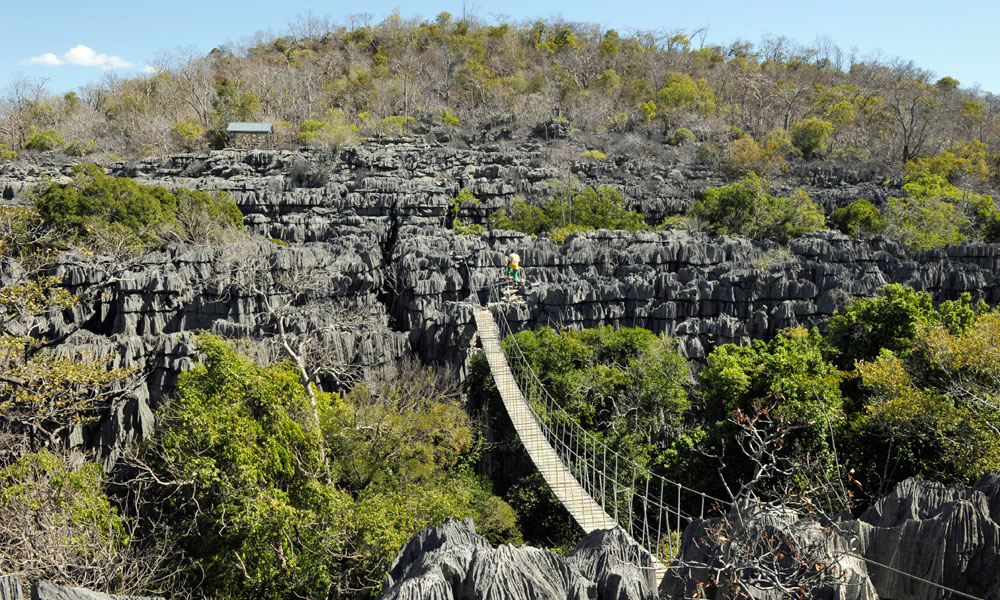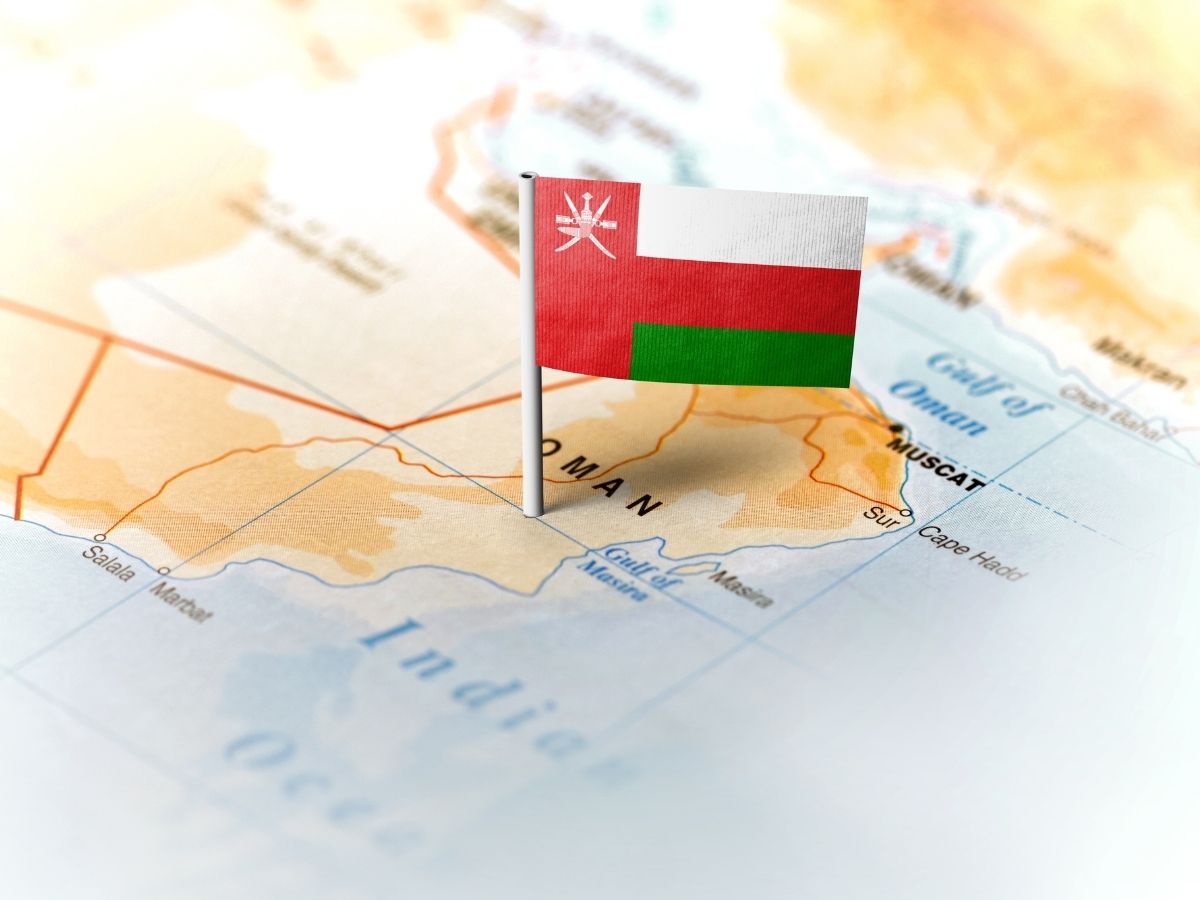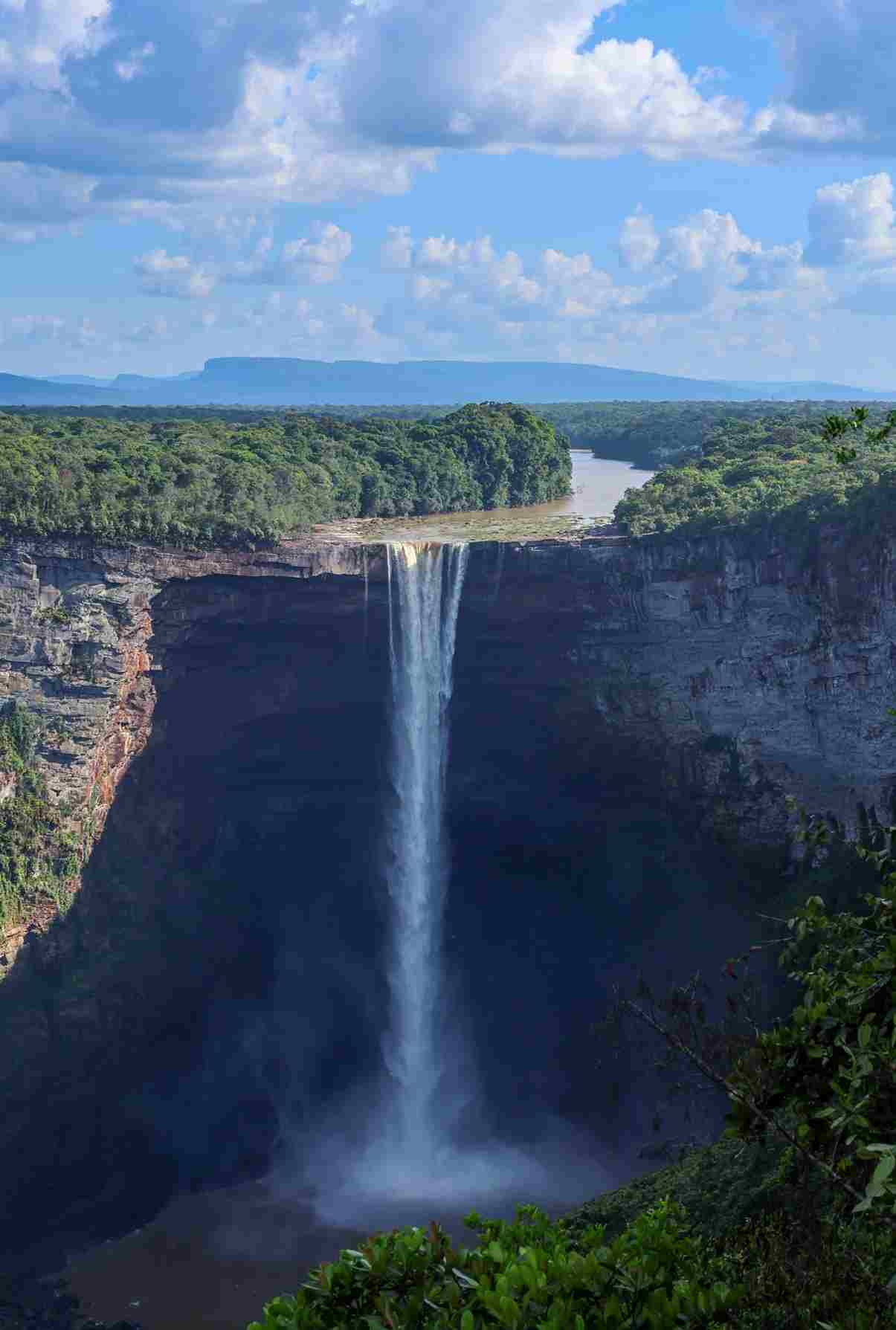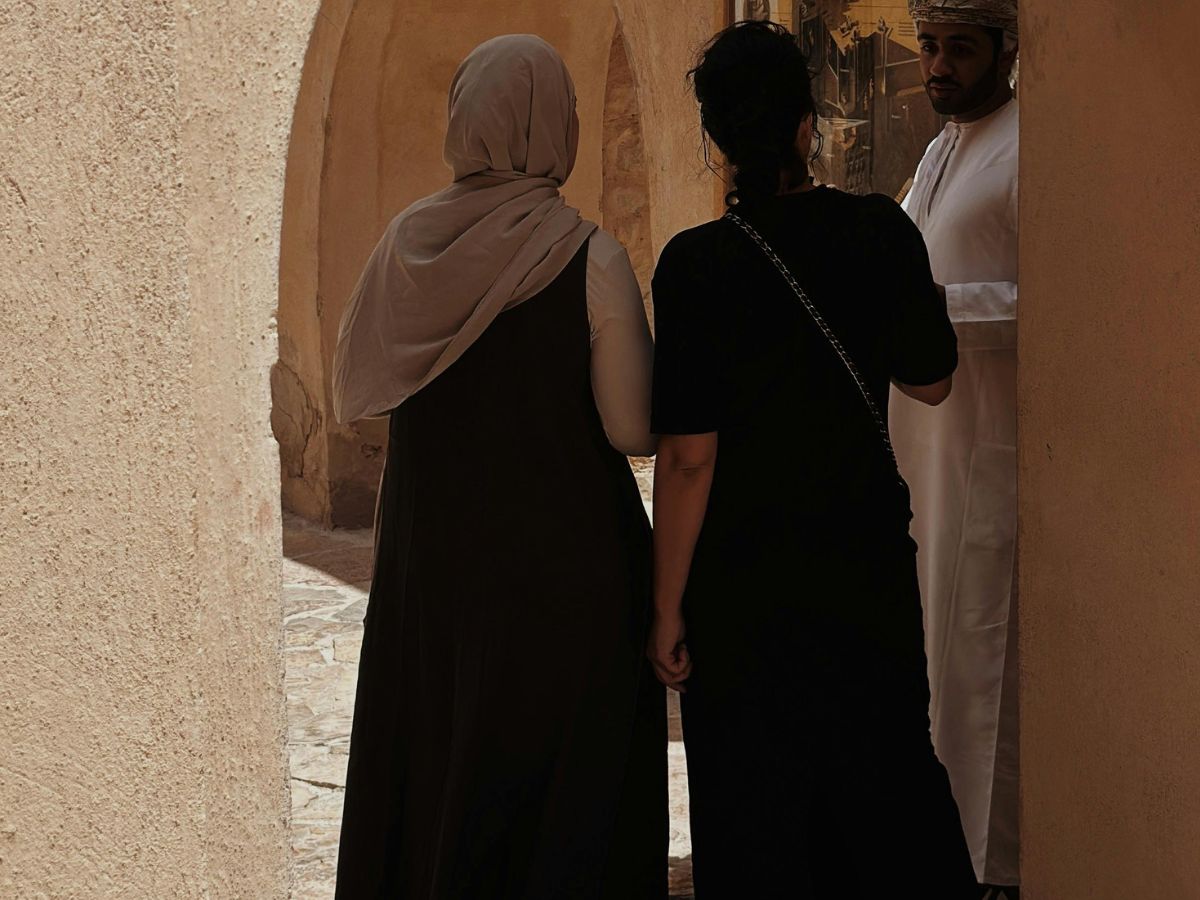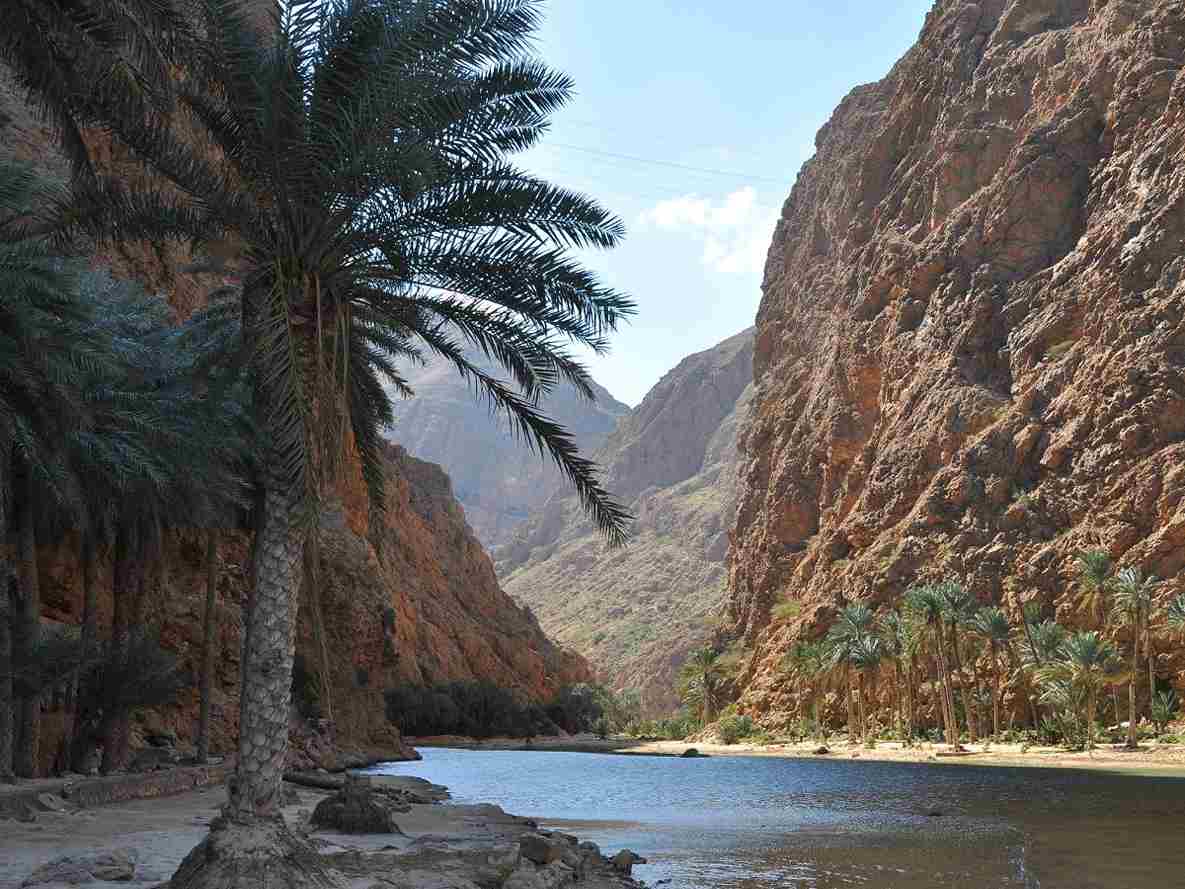Located off the southeast coast of Africa, this island nation—comprised of the main island of Madagascar and its proximity to smaller surrounding islands—is a land of diverse contrasts, offering countless activities to do in Madagascar. It is renowned for Madagascar’s breathtaking biodiversity, unique flora and fauna, dramatic landscapes, and cultural heritage. Madagascar is also home to some of the best beaches in the world, making it a top destination for travelers seeking sun, sand, and sea. From vast stone forests to tranquil beaches, the country offers experiences that cater to nature lovers, adventure seekers, and those interested in rich traditions. Below are the top ten destinations you shouldn’t miss when planning your trip and the best time to visit Madagascar. Be sure to visit Madagascar to explore its unique natural attractions, the diversity of islands that make up the country, and a wide range of experiences.
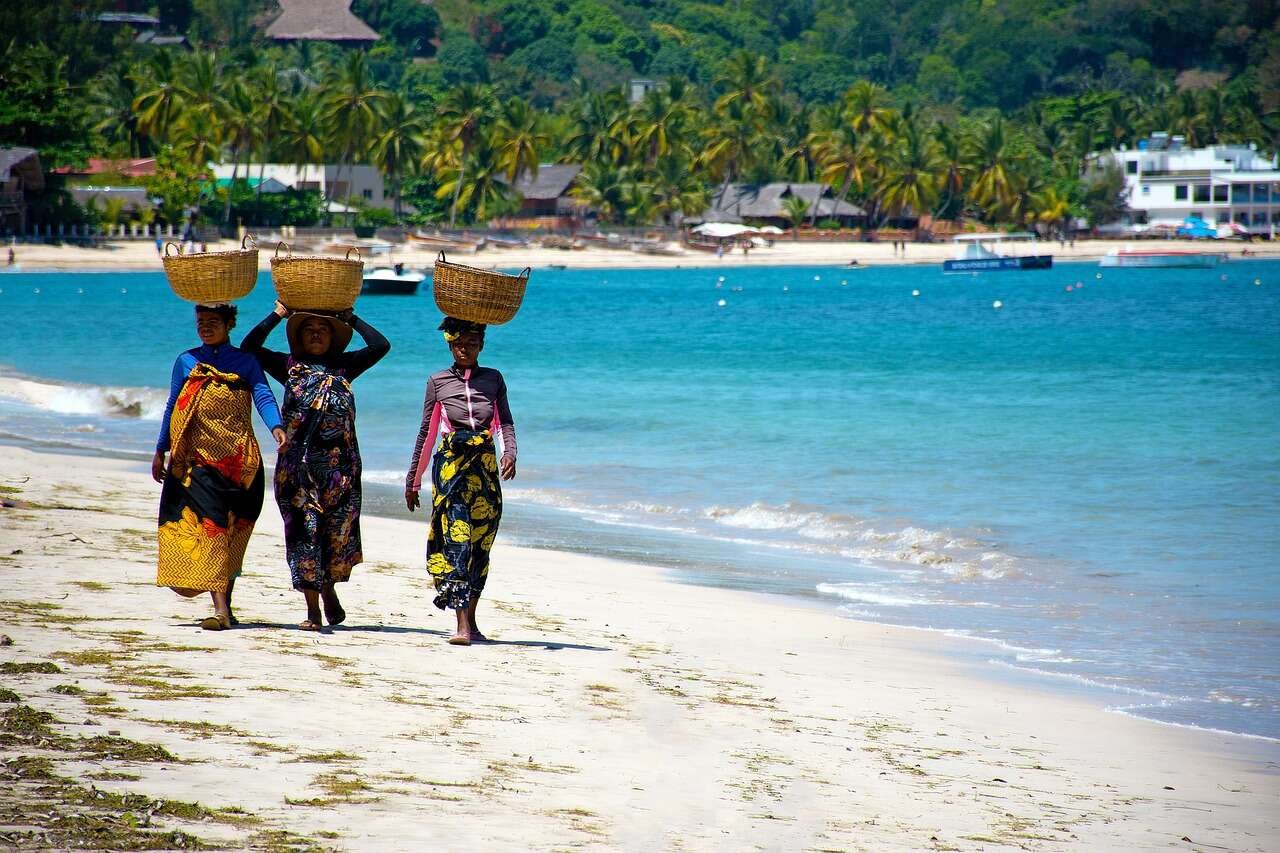
Introduction: Discovering Madagascar’s Magic
Madagascar, an enchanting island in the Indian Ocean, is a destination like no other. Renowned for its breathtaking natural environment, this island nation is a haven for travelers seeking adventure, relaxation, and a deep connection with nature. From the iconic baobab trees lining the Avenue of the Baobabs to the lush rainforests teeming with endemic species, Madagascar’s landscapes are as diverse as they are beautiful. The country’s national parks, including several UNESCO World Heritage Sites, protect a wealth of wildlife found nowhere else on Earth, making it a paradise for nature lovers and wildlife enthusiasts. Whether you’re exploring pristine beaches, wandering through ancient forests, or immersing yourself in the vibrant local culture, every corner of Madagascar offers a new discovery. With its unique blend of natural wonders and rich traditions, Madagascar invites you to experience the magic of its parks, wildlife, and welcoming local communities.
1. Antananarivo: The Vibrant Capital
Antananarivo, also known as Tana, is the bustling heart of Madagascar and the largest city in the country. Built on rolling hills, it seamlessly blends the old with the new, offering visitors a glimpse into both the country’s past and its modern-day pulse. As the first stop for many visitors, the capital city is often seen as a gateway to discovering Madagascar’s rich history and diverse culture, with its sites and markets appealing to locals and tourists alike.
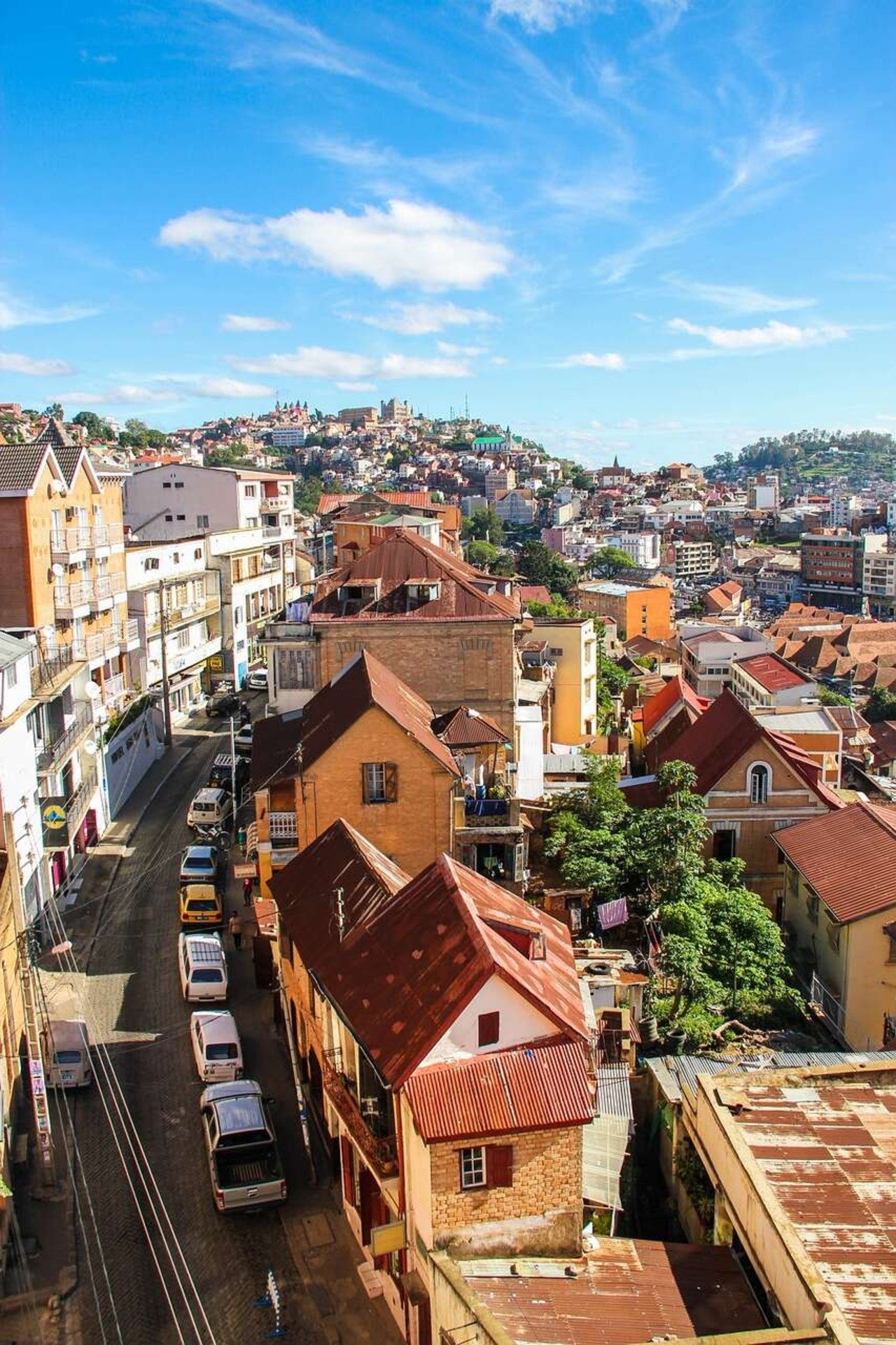
Highlights:
Haute-Ville (Upper Town): A walk through this historic district offers an immersive experience of Madagascar’s colonial past. Cobblestone streets wind past French-inspired mansions, each with its story. Don’t miss visiting the Queen’s Palace, the Rova of Antananarivo, which provides both historical insights and panoramic views of the city.
Analakely Market: The market is a sensory overload in the best possible way. Here, you’ll find local goods ranging from exotic spices and handcrafted artefacts to Malagasy textiles and fresh produce.
Andohalo Cathedral: A symbol of Madagascar’s Christian heritage, this Gothic-style cathedral stands out against the urban landscape, offering a peaceful retreat amidst the city’s hustle.
Cuisine: Malagasy food is an exciting fusion of African, Asian, and French influences. Street food is popular, and you should try local specialties like romazava (a meat stew with leafy greens) and koba (a sweet rice and peanut cake).
If you’re planning a trip to Antananarivo, aim for the months between April and October. The cooler, drier weather during this period is ideal for exploring the city’s historic sites, vibrant markets, and scenic spots without being interrupted by rainfall.
2. Tsingy de Bemaraha: Nature’s Stone Forest
Tsingy de Bemaraha National Park is a UNESCO World Heritage Site and a renowned nature reserve, often described as a natural wonder unlike anything else on Earth. Its name, “Tsingy,” translates to “where one cannot walk barefoot,” a fitting description for its sharp, needle-like limestone formations that dominate the landscape. Certain areas of the park are easily accessible to visitors via guided tours or established trails.
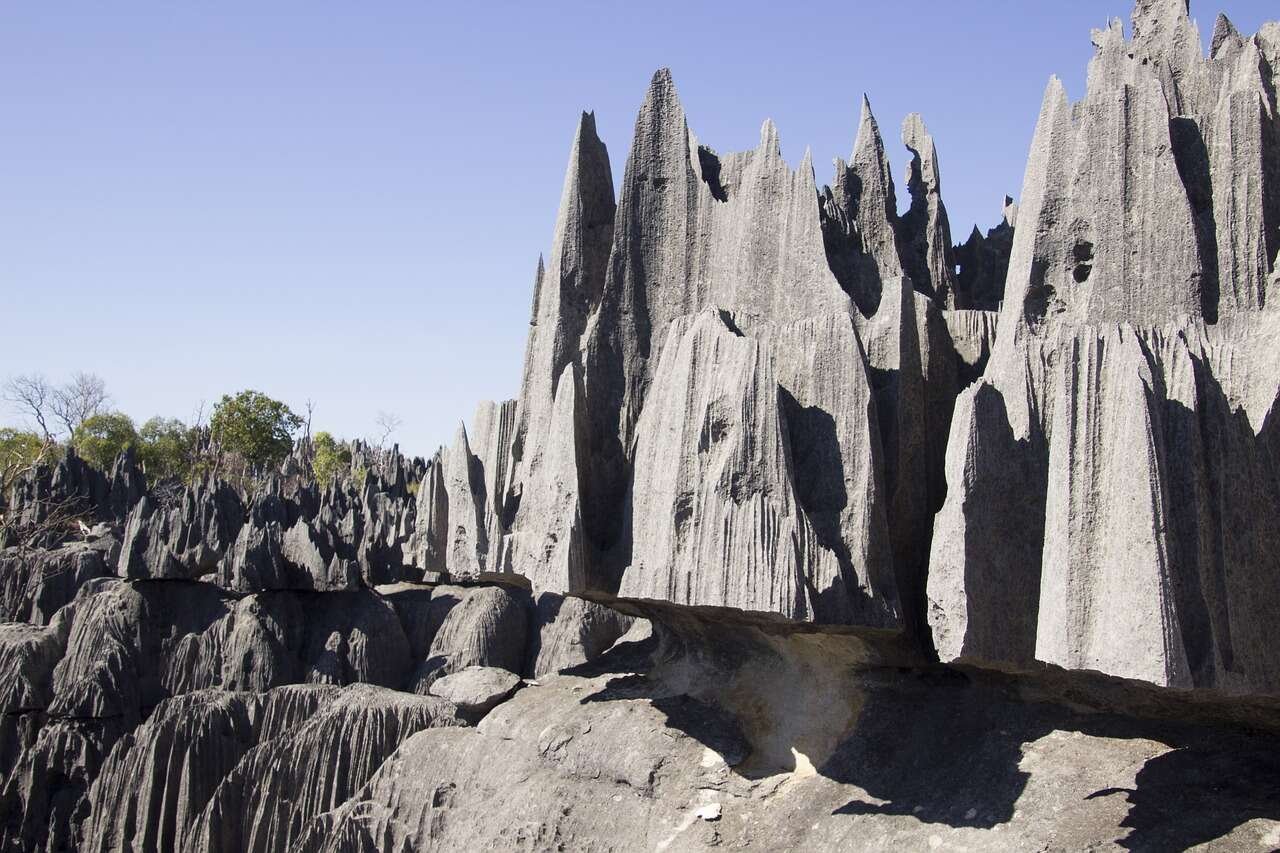
What to Expect:
Hiking and Exploration: The park offers some of the most adventurous hiking experiences in Madagascar. Walking through narrow canyons, over suspension bridges, and along sharp rock edges, you’ll feel like you’ve stepped into another world. The towering pinnacles—some up to 70 metres high—provide awe-inspiring views.
Wildlife: Despite the rugged environment, Tsingy is home to an array of wildlife, including 11 species of lemurs, various reptiles, and over 100 species of birds. Keep your eyes open for the rare Decken’s sifaka and the elusive Madagascar harrier-hawk.
Caves and Canyons: These natural formations, millions of years in the making, tell the story of Madagascar’s geological past. Many caves and underground rivers are waiting to be explored.
Natural Pools: After a day of hiking, cool off in one of the park’s hidden natural pools, nestled within the stone formations.
Best Time to Visit:
Make sure to visit Tsingy de Bemaraha between April and November, when dry weather makes navigating the park’s limestone paths easier. During this time, you’ll have the best chance to explore the awe-inspiring rock formations in comfort.
3. Avenue of the Baobabs: A Photographer’s Dream
The Avenue of the Baobabs is one of the most photographed spots in Madagascar. This stretch of dirt road, flanked by towering baobab trees—some reaching heights comparable to an eight story building—that are centuries old, is often likened to a scene out of a fantasy novel. The unique silhouettes of these trees, particularly at sunrise and sunset, create a picture-perfect backdrop.

Key Features:
Sunrise and Sunset: The most magical times to visit are during the golden hours. Sunset, in particular, paints the sky with shades of orange, pink, and red, perfectly complementing the ancient baobabs.
Cultural Significance: These trees are not just landmarks; they have deep roots in Malagasy culture and mythology. Local guides can share the spiritual and practical roles baobabs play in the community.
Conservation Efforts: Many of the trees are over 800 years old, and local conservation efforts and national parks aim to protect them from deforestation and environmental threats. Visitors can learn about these projects and even participate in tree-planting activities.
Best Time to Visit:
To capture the Avenue of the Baobabs at its finest, plan your visit between May and October. The dry skies during these months provide perfect lighting conditions, making it a dream for photographers and nature lovers alike.
4. Île Sainte-Marie: Tropical Island Getaway
Sainte Marie Island, also known as Nosy Boraha, is a small island off Madagascar’s east coast. Once a pirate stronghold, the island is now a haven for those seeking relaxation and natural beauty. Its laid-back atmosphere, combined with pristine beaches and azure waters, makes it a perfect tropical getaway. There are few people on the island, making it ideal for those seeking tranquility. The warm waters surrounding the island are perfect for swimming, whale watching, and taking a boat trip to explore secluded beaches, nearby islets, or marine life. Visitors can also discover traditional fishing villages along the coast, where they can experience local culture and observe daily life.
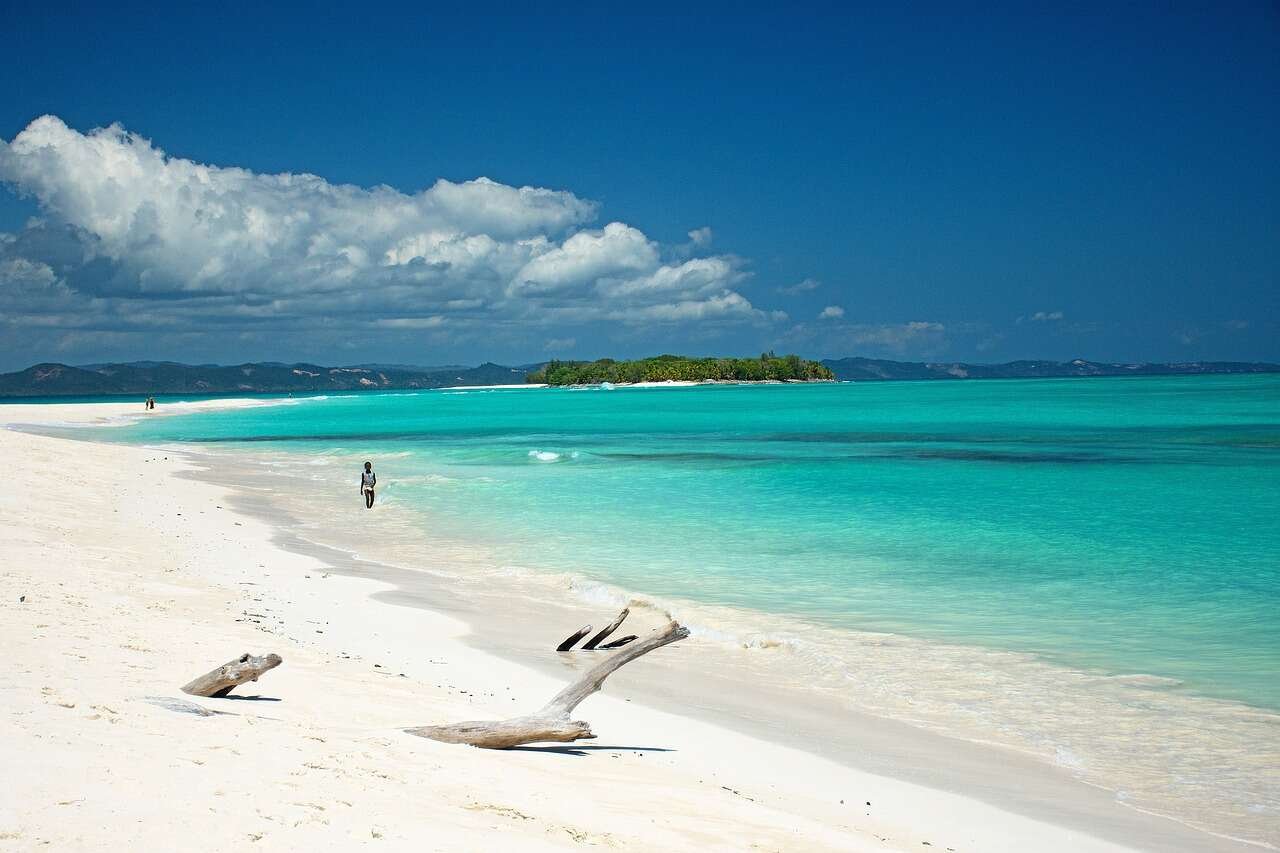
Activities:
Whale Watching: Between July and September, humpback whales migrate to the waters around Île Sainte-Marie to breed. It’s one of the best places in the world to see these gentle giants up close.
Snorkeling and Diving: The clear, shallow waters are ideal for snorkelling and diving, offering encounters with vibrant coral reefs, tropical fish, rays, and even sea turtles.
Pirate History: The island’s pirate cemetery is a fascinating reminder of its buccaneer past. Weathered tombstones tell stories of legendary pirates who sailed the Indian Ocean in search of treasure.
Motorbike Exploration: Rent a motorbike and explore the island’s hidden coves, beaches, and lush rainforests.
Fresh Seafood: Local restaurants serve fresh seafood, including grilled lobster and octopus curry, caught daily by local fishermen.
Best Time to Visit:
For the best weather, crystal-clear waters, and whale-watching opportunities, plan your visit to Île Sainte-Marie from April through December. This period offers plenty of sunshine and fewer rainy days, ensuring you make the most of your island escape.
5. Ranomafana National Park: Rainforest Wonderland
We recommend visiting Ranomafana National Park for its unique biodiversity and attractions. Located in the southeast, this park is a lush, mountainous rainforest that offers incredible wildlife viewing, scenic trekking opportunities, and natural hot springs that provide a relaxing experience for visitors.
Travelers can also visit the Anja Community Reserve, which lies south of Antananarivo. This community-managed reserve is renowned for its approachable ring-tailed lemurs and offers unique wildlife viewing opportunities in Madagascar’s central highlands.
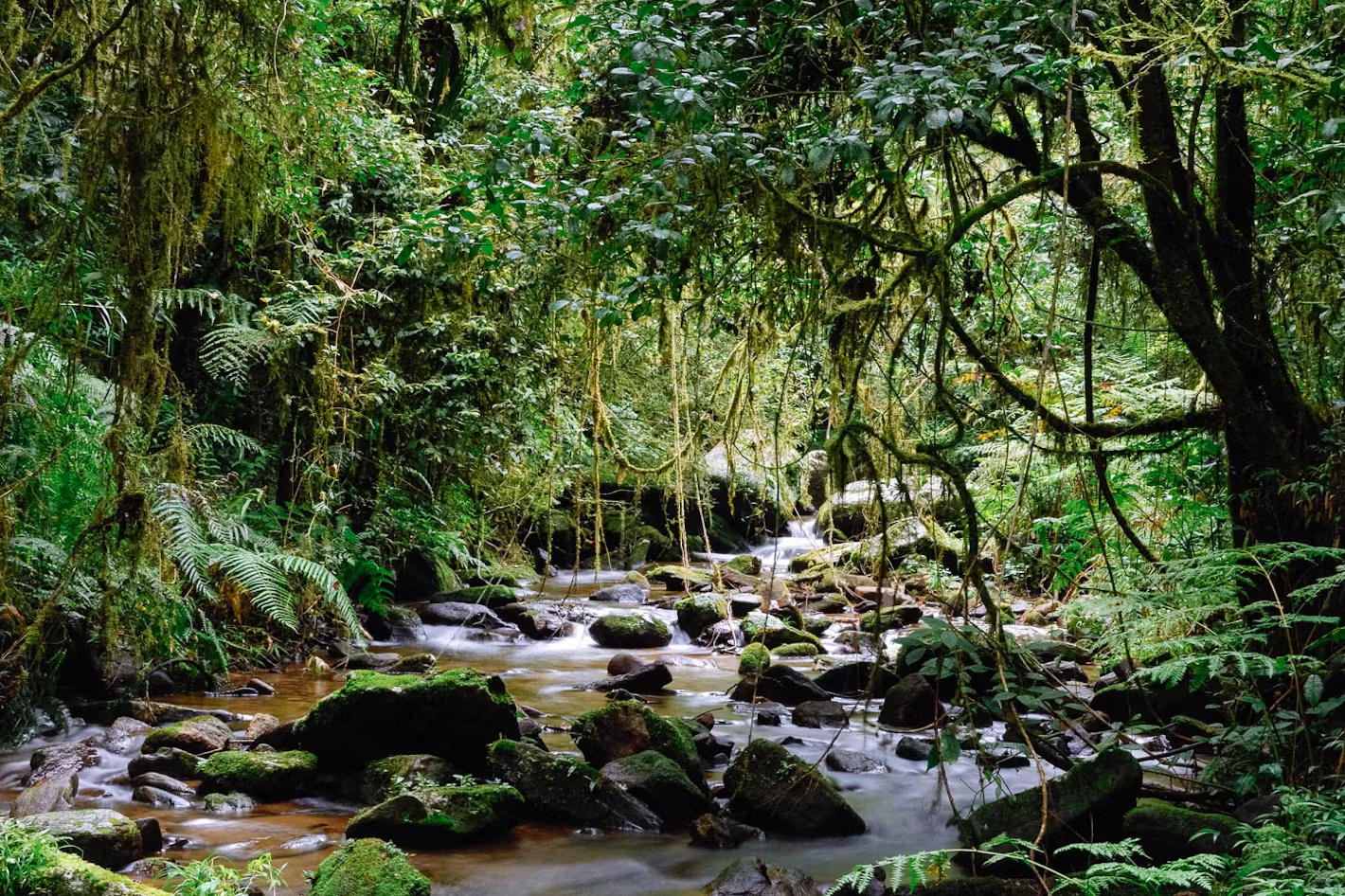
6. Isalo National Park: Madagascar’s Grand Canyon
Isalo National Park, often called Madagascar’s Grand Canyon, is a breathtaking showcase of the island’s dramatic geology and vibrant biodiversity. Located in the southwest, this national park is famed for its rugged terrain, where jagged peaks rise above sweeping canyons and sun-drenched plateaus. The landscape is dotted with natural pools and framed by beautiful beaches, creating a striking contrast between arid rock formations and lush oases. Isalo National Park is a haven for wildlife encounters, offering visitors the chance to spot a variety of lemur species in their natural habitat, as well as a remarkable array of endemic flora that thrives in this unique environment.
What to See:
Within Isalo National Park, you’ll find an impressive diversity of wildlife, including the charismatic ring-tailed lemurs and agile sifakas, as well as over 80 species of birds. The park’s dramatic canyons and gorges are perfect for hiking, leading you to hidden natural pools where you can cool off after a day of exploration. Along the way, you’ll encounter striking rock formations and panoramic viewpoints that reveal the park’s rugged beauty. For those interested in local culture, nearby villages offer a warm welcome, providing opportunities to meet local people and learn about their traditions and connection to the land. Whether you’re seeking adventure or a deeper understanding of Madagascar’s heritage, Isalo National Park delivers an unforgettable experience.
Adventure Tips:
To fully appreciate the wonders of Isalo National Park, consider hiring a knowledgeable local guide who can share insights into the park’s unique wildlife and endemic plants. The best time to visit is during the dry season, from April to October, when the weather is ideal for hiking and exploring the park’s rugged terrain. Be sure to pack sturdy hiking boots, plenty of water, and sun protection, as the trails can be challenging but rewarding. With its combination of natural beauty, wildlife, and cultural encounters, Isalo National Park is a must-visit for anyone looking to experience the wild heart of Madagascar.
7. Ankarana Special Reserve: Underground Marvels
Tucked away in northern Madagascar, the Ankarana Special Reserve is a true wonderland for adventurers and nature lovers. This remarkable reserve is renowned for its labyrinth of underground caves, dramatic canyons, and the iconic tsingy—sharp limestone pinnacles that create a surreal landscape. The reserve’s unique geological features are matched by its rich biodiversity, making it a hotspot for wildlife enthusiasts eager to discover Madagascar’s endemic species in their natural environment.
Many travelers to Ankarana also visit Amber Mountain National Park, famous for its volcanic landscape, lush biodiversity, and scenic crater lakes. Amber Mountain offers mountain streams, waterfalls, and a variety of flora and fauna, making it a top destination for nature-centered excursions.
Ankarana is easily accessible from Diego Suarez, a historic port city in northern Madagascar. This port city serves as a convenient base for exploring both Ankarana Special Reserve and nearby attractions.
Why Visit:
Ankarana Special Reserve offers a one-of-a-kind opportunity to explore Madagascar’s subterranean world and encounter its extraordinary wildlife. The reserve is home to a variety of lemur species, colorful birds, and elusive reptiles, all thriving amidst the reserve’s rugged terrain. Guided night walks are a highlight here, allowing visitors to witness the haunting calls of lemurs echoing through the forest and spot nocturnal creatures like the fossa, Madagascar’s top predator. The reserve’s proximity to the Indian Ocean also makes it an excellent spot for whale watching, especially during the humpback whale mating season, when these majestic creatures can be seen breaching in nearby waters. Beyond its natural wonders, Ankarana offers a glimpse into local culture, with opportunities to learn from local guides about the traditions and stories that shape life in this part of Madagascar. For those seeking adventure, wildlife encounters, and a deeper connection to the island’s natural environment, Ankarana Special Reserve is an essential stop on any Madagascar journey.
8. Andasibe Mantadia National Park: Land of the Indri
Wildlife Highlights:
Andasibe Mantadia National Park is a true jewel among Madagascar’s national parks and a UNESCO World Heritage Site, celebrated for its lush rainforests and extraordinary biodiversity. The park is most famous as the home of the indri, the largest of all lemur species, whose haunting calls echo through the forest canopy at dawn. In addition to the indri, visitors can encounter eight other lemur species, including the playful sifaka and the charismatic ring-tailed lemur, all thriving in their natural habitat. Bird enthusiasts will delight in spotting rare endemic species flitting among the trees, while the park’s rich ecosystem also supports a variety of reptiles and amphibians unique to Madagascar. Exploring Andasibe Mantadia’s dense, emerald-green forests offers a rare opportunity to witness some of the world’s most fascinating wildlife in a pristine natural environment.
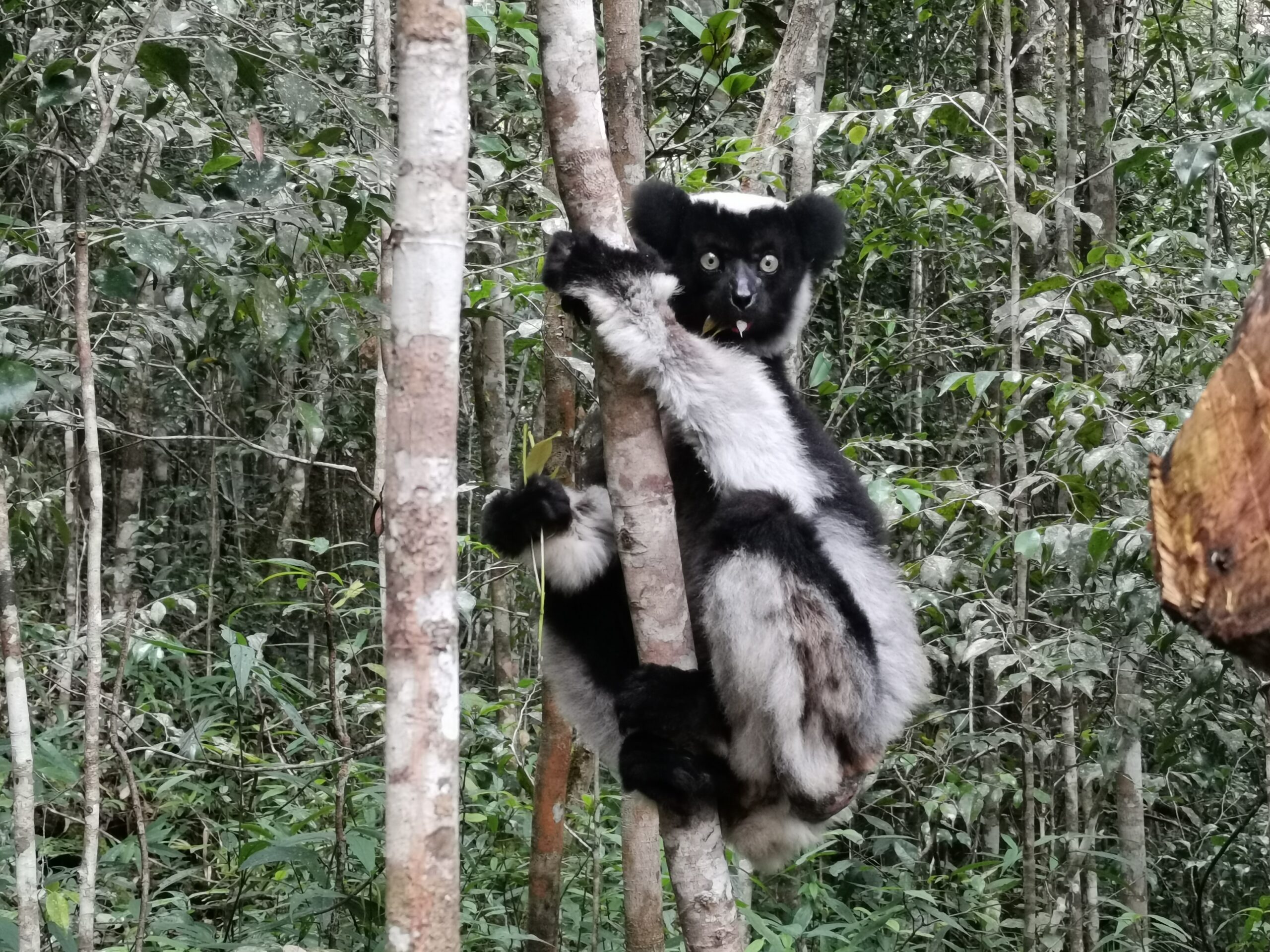 Visitor Experience:
Visitor Experience:
A visit to Andasibe Mantadia National Park is an immersive journey into the heart of Madagascar’s wild beauty. Guided tours led by knowledgeable local guides allow you to venture deep into the rainforest, where you can observe lemur species up close and learn about the delicate balance of this unique ecosystem. The park features a network of hiking trails, ranging from gentle walks to more challenging treks, each offering breathtaking views and the chance to discover hidden waterfalls and vibrant endemic flora. Beyond wildlife encounters, the park provides a window into local culture—nearby villages welcome visitors eager to experience Malagasy traditions and daily life. Whether you’re a wildlife enthusiast, a nature photographer, or simply seeking a deeper connection with Madagascar’s natural environment, Andasibe Mantadia National Park promises an unforgettable adventure filled with discovery and wonder.
9. Kirindy Forest: Nocturnal Wildlife Encounters
Kirindy Forest, located on Madagascar’s west coast, is a must-visit destination for those eager to experience the island’s unique nocturnal wildlife. This dry deciduous forest is renowned for its remarkable biodiversity and is one of the best places in Madagascar to spot rare and elusive species after dark. As the sun sets, Kirindy comes alive with the sounds and movements of creatures rarely seen elsewhere. Night walks with experienced local guides offer the thrilling chance to encounter the famous fossa—Madagascar’s top predator—as well as several lemur species, including the tiny mouse lemur and the curious fork-marked lemur. The forest is also home to a variety of endemic reptiles, birds, and insects, making every step an opportunity for discovery.
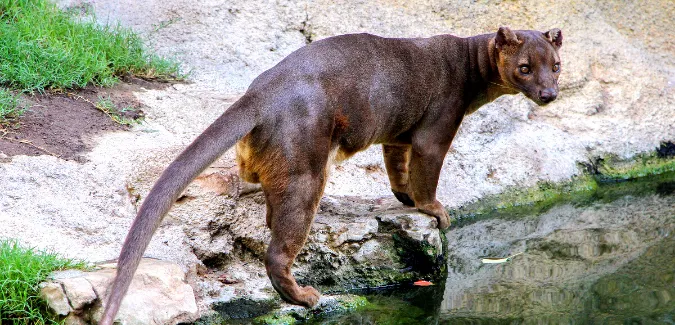
During the day, Kirindy’s trails wind through a landscape dotted with towering baobab trees and palm trees, providing a striking contrast to the lush rainforests found elsewhere on the island. The forest’s unique ecosystem supports a wealth of endemic flora and fauna, offering visitors a glimpse into Madagascar’s ancient natural heritage. Local guides share their deep knowledge of the forest’s wildlife and the important conservation efforts led by local authorities to protect this fragile environment. For those seeking authentic wildlife encounters and a deeper appreciation of Madagascar’s natural habitat, Kirindy Forest is an essential stop—especially for travelers who want to experience the magic of the island’s nocturnal world.

